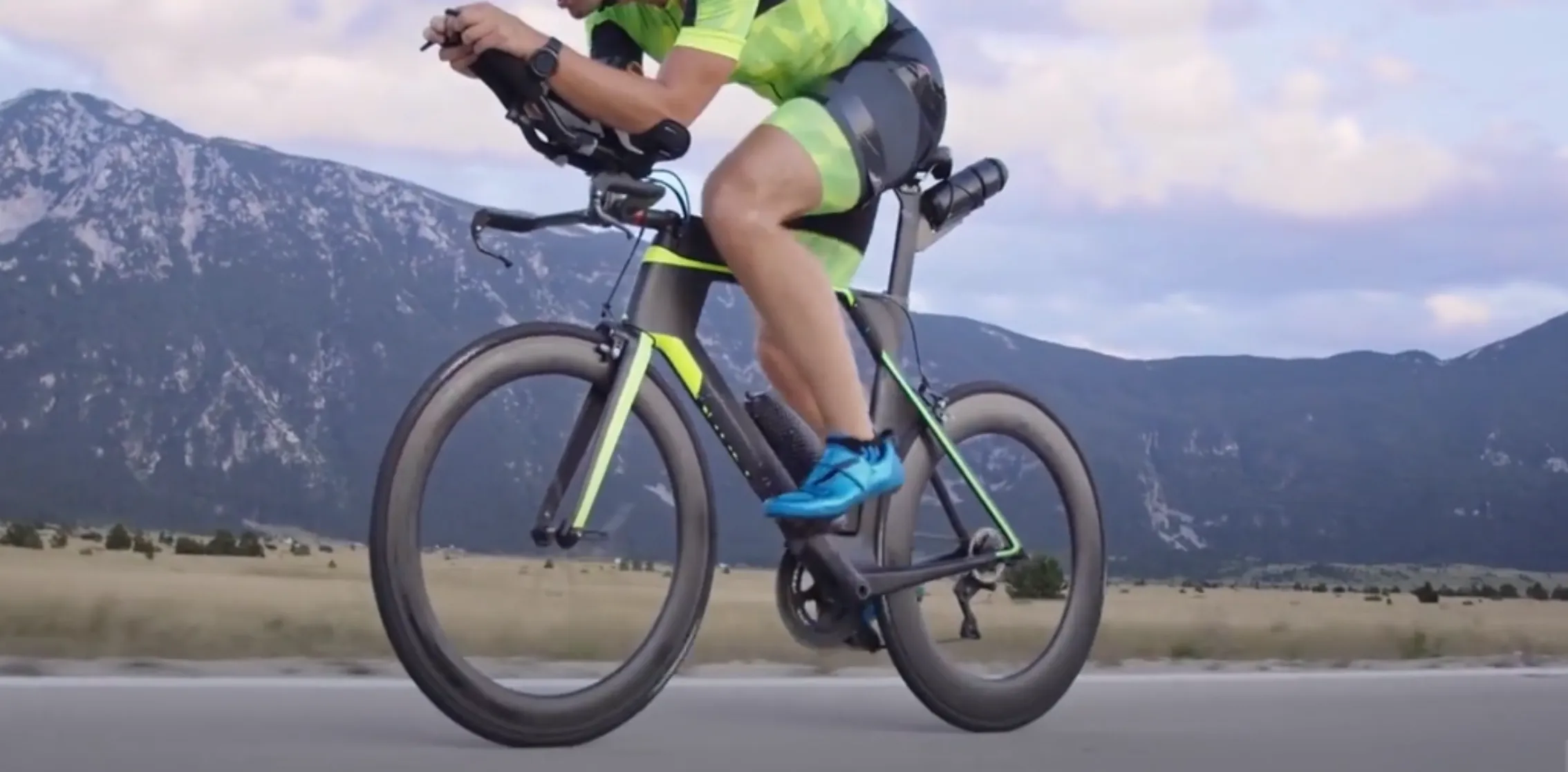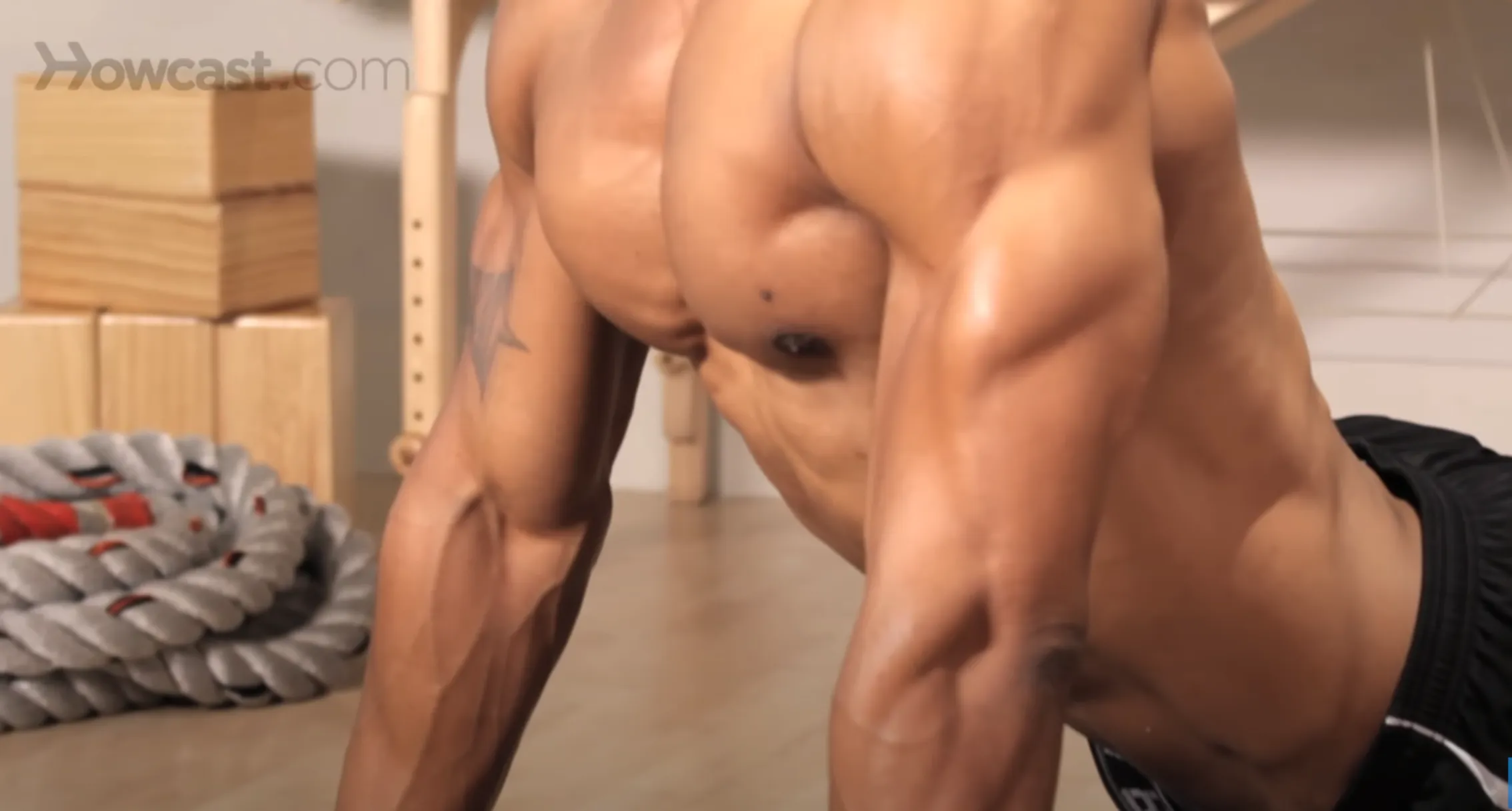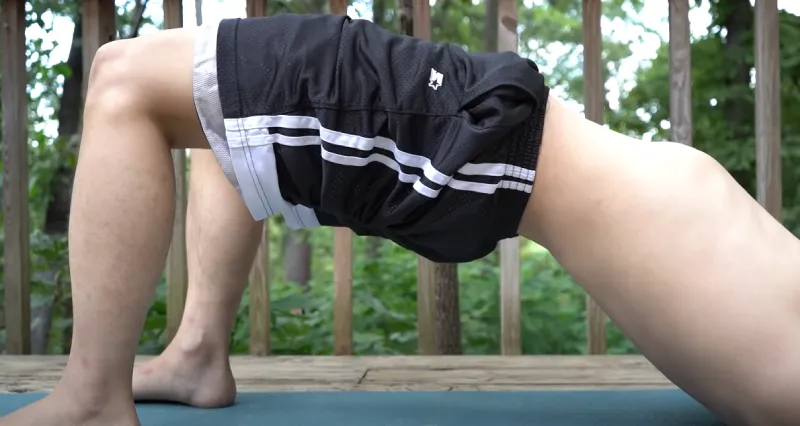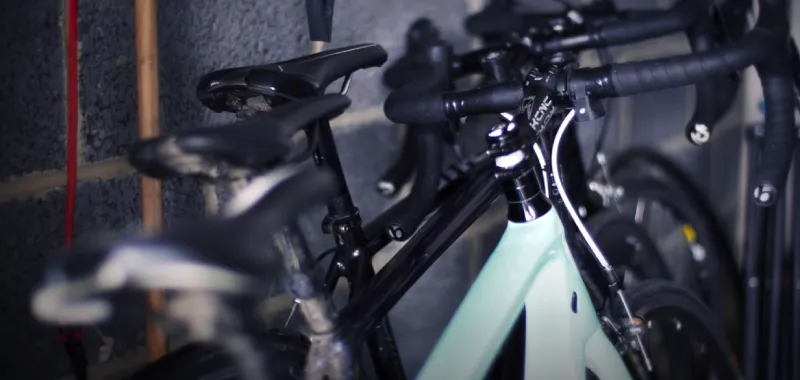Cycling injuries such as lower back pain are common. Muscular imbalances, an ill-fitting bike, and excessive miles can cause it. Consider having a professional evaluate the fit of your bike to reduce the risk of back pain. As a result, you may experience less discomfort and have a more comfortable ride.
Stretching can stop tight muscles and prevent lower back pain. Trying stretches like the cat-cow stretch, knee-to-chest stretch, cobra pose, pigeon pose, and seated forward fold can help improve or relieve lower back pain. Improved posture and core stability exercises can help strengthen the lower back muscles to reduce the risk of injury while cycling.
As part of this blog post, we will discuss some of the best stretches for lower back pain that every cyclist should know. We’ve got you covered, from simple yet effective stretches you can do anywhere to more advanced yoga poses.
✔ Top Pick: Core-Training Resistance Bands
Many people use resistance bands to strengthen the core muscles that help stabilize the spine and prevent back pain.
Lower Back Pain Cycling Stretches: 18 Best Moves to Try

The repetitive pedaling motions may result in back pain and stiffness, making it difficult to enjoy your ride. There are some effective stretches that you can incorporate into your pre and post-cycling routine to ease lower back pain.
Cat-Cow Stretch
Yoga poses like the Cat-Cow Stretch are excellent ways to relieve lower back pain. This pose involves moving through two different postures, the cat-cow pose, which alternately stretches and compresses the spine. Follow these steps to perform this stretch:
- Start on your hands and knees, placing your wrists under your shoulders and knees in line with your hips.
- Inhale deeply, arching your back and aiming for the ceiling with your head and tailbone (Cow Pose).
- Exhale as you draw your navel toward and round your spine (Cat Pose).
- Repeat this movement for several breaths, focusing on the stretch in your spine.
Knee-to-Chest Stretch
Stretching your knees to your chest works your hips and lower back. Performing this stretch is as simple as following these steps:
- Your feet should be flat on the floor with your knees bent.
- Raise one knee toward your chest and hold on to it with both hands.
- Take several deep breaths, feeling your lower back and hip stretch.
- Repeat with the other leg.
Child’s Pose
It is a gentle stretch for the hips, thighs, and ankles. Practicing this stretch regularly can improve flexibility in these areas, which can ultimately help to reduce lower back pain. To perform the child’s pose, follow these steps:
- Place your hands underneath your shoulders and your knees beneath your hips, and get down on all fours.
- Put your hips back on your heels and extend your arms forward so your forehead touches the ground.
- The pose should be held for 30 seconds to 1 minute.
- Leave the pose slowly by rolling up to a seated position.
Seated Forward Fold
Once you have completed the child’s pose, the seated forward fold is an excellent stretch to incorporate into your routine. Practicing this pose will help stretch your lower back and hamstrings. Follow these steps to complete the seated forward fold:
- Sit on the ground with your legs extended in front of you.
- Sit up tall and inhale deeply.
- Taking a deep breath, fold your hips forward slowly.
- Reach for your feet or ankles, but only go as far as you can comfortably.
- Within 30 seconds to a minute, hold the pose.
- Slowly come out of the pose by sitting back up on an inhale.
The Seated Spinal Twist
This yoga pose helps stretch and release lower back muscles by twisting them while seated. This pose can also improve digestion and help detoxify the body. Here are the steps to perform this stretch:
- Put your legs out in front of you as you sit on the floor.
- Put your foot on the floor as you bend your right knee over your left leg.
- Turn your torso to the right by placing your left elbow outside your right knee.
- On the opposite side, repeat this pose, holding it for several breaths.
Cobra Pose

In the Cobra Pose, the back, shoulders, and neck muscles are strengthened, and the abdomen and chest are stretched. This pose improves posture and can help ease tension in the lower back. The following steps will guide you through this stretch:
- Lie face down on the floor, with your hands under your shoulders and elbows close to your body.
- Press your palms into the floor as you lift your chest and head off the ground.
- Keep your elbows close to your body and relax your shoulders away from your ears.
- After a few breaths, release the pose.
The Pigeon Pose
Pigeon Pose stretches muscles in the hips and lower back, releasing tension and increasing flexibility. This pose is also beneficial for cyclists who experience sciatic pain. Follow the steps below:
- Begin on your hands and knees, with your hands shoulder-width apart and knees hip-width apart.
- Place your right knee behind your right wrist and bring your right knee forward.
- Keep your hips square to the front as you extend your left leg behind.
- Lower your torso down over your right leg and relax your forehead to the ground.
- Take a few deep breaths, then repeat on the other side.
The Hip Flexor Stretch
The Hip Flexor Stretch is a stretch for the muscles in front of the hips, often tight from sitting for long periods. This stretch can also help to ease lower back pain. Below are the steps for performing this stretch:
- Lie on your back with one knee bent in front of you and the other behind you.
- Press your hips forward, stretching the muscles in your front hip.
- Repeat this pose on the other side for several breaths.
Hamstring Stretch
Stretching the hamstrings targets the muscles in the back of the thighs, helping to relieve lower back pain. To perform this stretch, follow the steps below:
- On your back, lie with your legs extended forward.
- Lift one leg and hold on to the back of your thigh with both hands.
- Stretch your hamstrings by pulling your leg towards your chest.
- Hold this pose for several breaths and then repeat on the other leg.
Plank
Planks are great exercises for strengthening the core muscles, which can ease lower back pain. To perform a plank:
- Start on all fours with your hands and knees on the ground.
- The hands should be directly beneath the shoulders and the knees below the hips.
- Lift your knees off the ground, with your toes being the only part of your feet left on the ground.
- Ensure that your back is straight and in a straight line from your head to your heels.
- Release the position after 30 seconds or a minute.
Superman exercise
Exercises like Superman target the lower back and improve its strength, which helps to ease lower back pain. To perform a Superman exercise:
- On the ground, lie on your stomach with your arms in front of you.
- Simultaneously, lift your arms, legs, and chest off the ground.
- Hold this position for a few seconds, and then slowly release.
Bridge pose

A bridge pose is an excellent exercise for strengthening the glute muscles, which play a role in stabilizing the lower back. To perform the bridge pose:
- As you lie on your back, bend your knees and keep your arms at your sides.
- Lift your hips as you press your feet and arms into the ground.
- Hold this position for 15 to 30 seconds and then release.
Lower Trunk Rotation
The Lower Trunk Rotation exercise helps to stretch the lower back muscles, which can alleviate lower back pain. To perform the Lower Trunk Rotation:
- Bend your knees while lying on your back.
- Let your knees fall to one side as you twist your spine.
- For 10-20 seconds, hold this position.
- Bring your knees back to the center.
- Repeat on the other side.
Upper Trunk Rotation
Like the Lower Trunk Rotation, the Upper Trunk Rotation helps stretch the upper back muscles and alleviate lower back pain. To perform the Upper Trunk Rotation:
- Lie on your back with your knees bent.
- While keeping your hips on the ground, rotate your upper body one way.
- Hold this position for 10-20 seconds.
- Return to the center and repeat on the other side.
Standing Back Bend
The Standing Back Bend targets the back muscles and is an excellent exercise to alleviate lower back pain. To perform the Standing Back Bend:
- Stand straight with your hands on your hips.
- Lean back slowly and gently, arching your back as much as possible.
- Hold this position for about 10 seconds, then return to the starting position.
Supine Figure-Four Stretch
The Supine Figure-four stretch targets the hip and back muscles and can help ease lower back pain. To perform the Supine Figure-four stretch:
- In a lying position, bend your knees.
- Cross one ankle over the opposite knee.
- Hold the back of the thigh behind the other knee.
- Slowly draw the legs toward the chest until a stretch is felt in the hip.
- Switch legs after 30 seconds to a minute.
Quadruped T-Spine Rotation
The Quadruped T-Spine Rotation targets the upper back muscles, improves spinal mobility, and can help alleviate lower back pain. To perform this exercise:
- The hands and knees should be shoulder-width apart as you start on all fours.
- Place one hand behind your head, keeping your elbow to the side.
- Rotate your torso toward your elbow, lifting your elbow toward the ceiling.
- Following a few seconds of holding this position, return to the starting position.
- Repeat on the other side.
Lower Back Pain Cycling Stretches: 5 Causes
Lower back pain is a common problem experienced by cyclists, which can negatively impact their performance and overall riding experience. Identifying the factors responsible for cycling-related lower back pain is essential in preventing and managing lower back pain in cycling.
Prolonged Sitting Position
One of the major culprits for back pain in cyclists is the prolonged sitting position. The forward-leaning part commonly used in cycling can significantly pressure the lower back, resulting in discomfort, stiffness, and pain. To minimize this issue, cyclists can incorporate breaks during their ride to stretch and release the pressure on their lower back.
Repetitive Peddling
The repetitive motion of peddling can also contribute to lower back pain. The repetitive use of the same muscles and overuse of other supporting muscles can cause muscle fatigue and lower back pain. Cyclists can prevent this by including different peddling techniques that engage different muscle groups and spreading their ride over several days to avoid overuse injuries.
Muscle Imbalance
Cycling can also contribute to muscle imbalance, where certain muscle groups become stronger or weaker than others. This can lead to improper spine alignment, causing lower back pain. To prevent this, cyclists should engage in strength training that targets the muscles involved in cycling and maintains good posture.
Improper Bike Fit
Another factor contributing to lower back pain in cycling is an improper bike fit. A poorly fitted bike can cause discomfort and pain in the lower back and the rest of the body. To ensure proper bike fit, cyclists should consult with a professional bike fitter or follow guidelines on bike fit measurements.
Lack of Core Stability
Lack of core stability can also lead to lower back pain. Core muscles are crucial to maintaining proper posture and balance, but cyclists often need to engage these muscles while cycling. Cyclists can incorporate core-targeting exercises, such as bird dogs, into their training routine to prevent this.
Lower Back Pain Cycling Stretches: 4 Prevention Tips

Many people experience lower back pain, sometimes leading to long-term discomfort and injury. There are practical and accessible ways to prevent this issue from occurring.
✔ Top Pick: Yoga Mat for Floor Stretches
Many people use a thick yoga mat to stay comfortable and stable while performing back-relief stretches.
Proper Bike Fit
An excellent method of avoiding lower back pain while cycling is to ensure your bike is set up correctly. An ill-fitted bike can cause your lower back to be strained. Here are some tips to ensure your bike fits properly:
- Each time you pedal, adjust the saddle height so your knees are slightly bent. This helps disperse the pressure throughout your legs and prevents your lower back from taking on too much undue stress.
- Check your reach to the handlebars. You’ll want to avoid being too stretched out or too upright. Ideally, your upper body should be comfortable, allowing you to pedal efficiently and maintain good posture.
- Make sure your handlebars are at the right height. If they’re too low, your back will be too hunched over, leading to discomfort. If they’re too high, you may strain your lower back unnecessarily.
Good Posture
Another way to prevent lower back pain is to maintain good posture. Proper posture helps disperse your body weight and reduces the stress your lower back is under. Here are some tips to improve your posture while cycling:
- Keep your shoulders relaxed. If they’re tense or hunched up, it can cause unnecessary tension in your back.
- Engage your core muscles. This is especially important when climbing hills or riding in a headwind. A strong core helps to support your lower back and maintain good posture.
- Avoid reaching too far forward. This can cause your back to round, leading to discomfort.
Core Strengthening Exercises
Cycling requires a strong core to prevent lower back pain. Regularly incorporating core strengthening exercises into your workout routine can make a big difference. Here are some activities to try:
- Planks: Targeting your entire core, this exercise can help to improve your posture.
- Russian twists: Targets your obliques and helps improve your bike stability.
- Superman: This exercise targets your lower back muscles and helps to strengthen them.
Taking Breaks During Long Rides
Taking breaks during long rides is crucial for preventing lower back pain. Sitting in the same position for a prolonged period can be uncomfortable and stiffen your lower back. Here are some tips to take breaks during long rides:
- Pull over and stretch every hour. Stand up and walk around, allowing your body to move and take a break from seated.
- Change your hand position on the handlebars. This can help to relieve pressure on your lower back.
- Adjust your saddle height or handlebar position if necessary. Sometimes a tiny tweak in bike fit can make a big difference.
Conclusion
Lower back pain doesn’t have to hinder your cycling routine. You can prevent and alleviate lower back pain by incorporating targeted stretches into your pre- and post-ride routines. Some of the most effective times for the lower back include the Seated Forward Fold, the Child’s Pose, and the Cobra Pose.
Remember to take breaks during your rides, stretch regularly, and maintain proper posture to prevent any future injuries. Invest in a good quality bike with proper fitting to reduce lower back pain.
Flexibility is essential for cyclists’ lower back muscles. These preventative measures allow you to enjoy pain-free cycling and improve your overall performance and fitness. Don’t let lower back pain hold you back. Try these stretches and see the difference in your cycling experience.
FAQs
What Causes My Bum Bone To Hurt After Cycling?
Your tailbone discomfort may be due to a saddle that is too soft, causing your coccyx and sit bones to sink too deeply. A narrow saddle lacking proper support for your sit bones or incorrect saddle positioning for your riding style can contribute to the pain. Adjusting your saddle type or position could help alleviate the discomfort.

![Cycling Stretches for Lower Back Pain: 17 Methods [5 Causes & 4 Prevention Tips]](https://cacyclinghub.com/wp-content/uploads/2024/08/Lower-Back-Pain-Cycling-Stretches.jpg)
